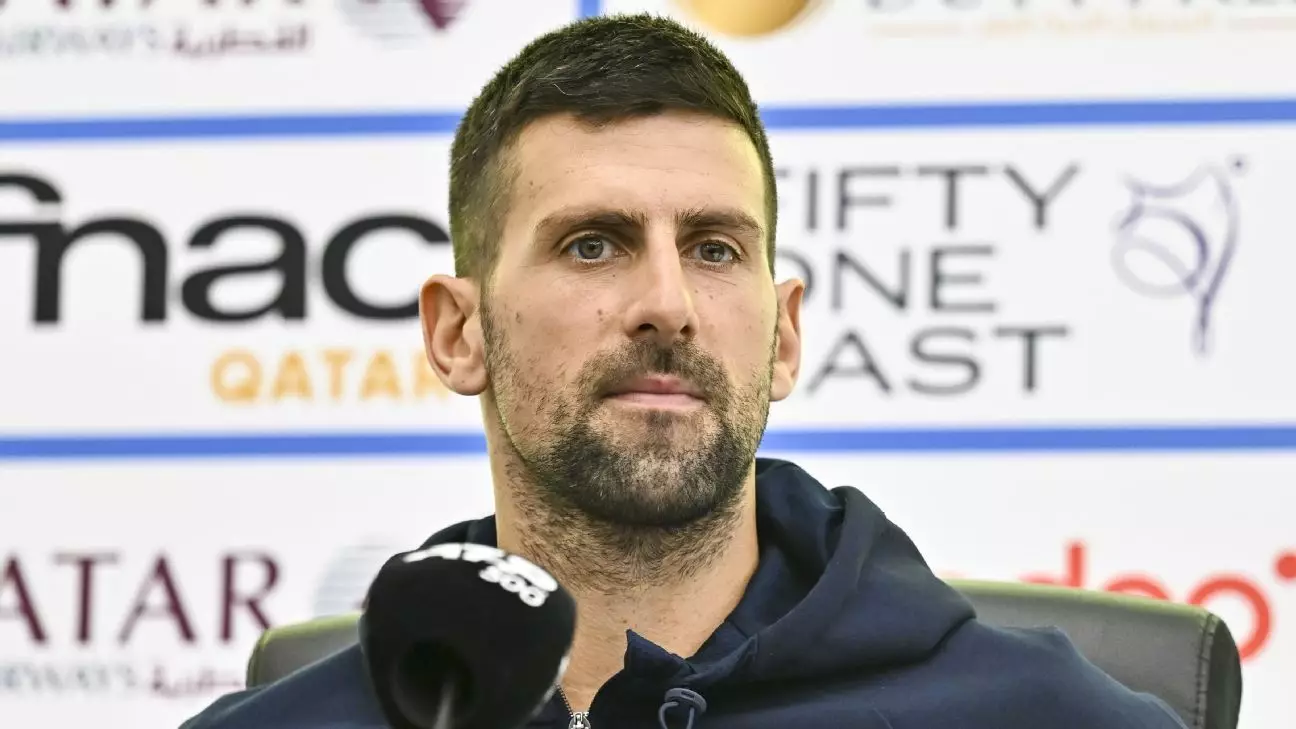In the high-stakes world of professional tennis, trust is paramount. Recent comments from Novak Djokovic, a prominent figure in the sport and a 24-time Grand Slam champion, have shed light on a growing disillusionment among players regarding the integrity of anti-doping processes. Djokovic’s concerns come in the wake of Jannik Sinner’s recent three-month suspension, which has sparked accusations of favoritism toward elite players. This situation unveils deeper issues within the World Anti-Doping Agency (WADA) and the International Tennis Integrity Agency (ITIA), raising alarms about the perceived double standards in how doping cases are handled.
Jannik Sinner’s suspension has ignited a firestorm of controversy. Initially scheduled to compete in the Qatar Open, Sinner opted for a deal with WADA that allowed him to serve a three-month ban rather than a more punitive measure that could have severely impacted his career. The circumstances surrounding his positive test for a banned anabolic steroid were attributed to accidental contamination, a narrative that was accepted by WADA, enabling him to return to the courts in time for major tournaments, including the French Open.
This leniency stands in stark contrast to the experiences of other athletes. For instance, Iga Swiatek, a five-time Grand Slam champion, faced a one-month suspension for a contaminated nonprescription medication. In another striking example, tennis player Simona Halep initially received a four-year ban, which was later reduced to nine months after a lengthy deliberation process. These discrepancies raise a question that many in the sport are asking: are the rules applied consistently across the board?
The handling of Sinner’s case has led to widespread frustration within the professional tennis community. Djokovic elaborated on this sentiment, indicating that numerous players have expressed their dissatisfaction with the way doping cases are processed. The concern is not merely about individual cases but about the underlying integrity of the sport itself.
As Djokovic pointed out, many players fear that those who hold positions of power or have access to elite legal representation might manipulate the system to their advantage. This perception of favoritism could undermine the fundamental principles of fairness and equality that are supposed to govern sportsmanship. The feeling that some athletes are playing by different sets of rules can breed resentment and distrust among competitors, which is detrimental not only to the athletes but also to the sport’s reputation.
With these concerns bubbling to the surface, Djokovic advocates for a comprehensive overhaul of the anti-doping framework within tennis. He argues that the existing system has proven itself ineffective and inadequate, suggesting that a reevaluation of procedures is urgently needed. The skepticism surrounding WADA and ITIA underscores a pressing need for transparency and accountability in combating doping in sports.
While the principles of anti-doping efforts establish a foundation meant to protect athletes and the integrity of competition, the inconsistency in enforcement calls that foundation into question. Players want assurance that every athlete will face the same scrutiny and consequences, regardless of their stature within the sport. This calls into view the pressing need for demonstrated integrity in the processes that govern the professional sports landscape.
The dialogue initiated by Djokovic serves as an essential catalyst for change within tennis. The issues surrounding doping policies demand immediate attention to rebuild trust among players and preserve the integrity of the sport. A commitment to revised protocols and an equitable application of rules is critical for fostering a fair competitive environment. As tennis grapples with these challenges, the necessity for reform has never been clearer, signifying a pivotal moment in the evolution of anti-doping measures in the sport. The future of tennis depends on the ability to establish a credible framework that all athletes can respect and trust, ensuring that the game remains a fair contest among equals.


Leave a Reply